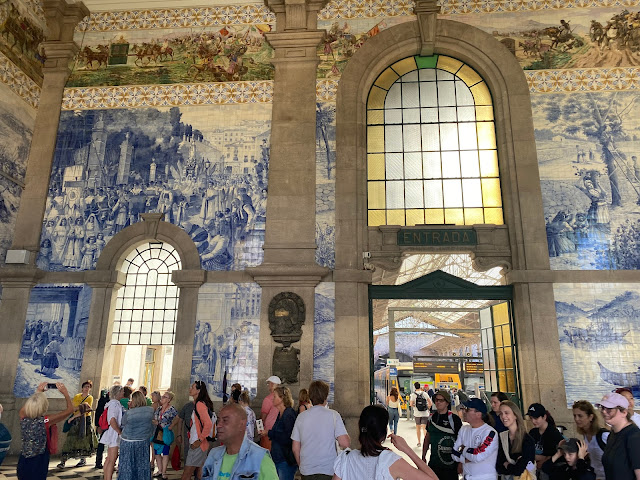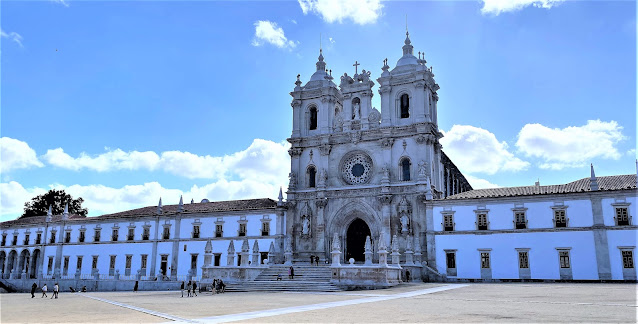June 29-30, 2022
As noted in the previous post, the current Cathedral of Santiago de Compostela was built in Romanesque style in the 13th century, with Gothic and Baroque additions in the 16th, 17th, and 18th centuries. It is a massive structure, and no doubt gets its notoriety from being the reputed burial spot of St. James (aka Santiago) the Greater, one of the twelve apostles of Jesus. However, it is a magnificent edifice of its own accord.
By the way, the only other churches in the world built over the tomb of an apostle are St. Peter's Basilica in Vatican City, St. Thomas Cathedral Basilica in Chennai, India, and the Basilica of St. John in Izmir, Turkey.
.JPG)
The interior of this cathedral is about 310 feet long, has a transept that measures 206 feet, and stands 72 feet high, making it the tallest building in Europe when it was built. Today it is still the largest Romanesque cathedral in Spain. At first glance it looks rather austere.




















.JPG)























.JPG)





.JPG)